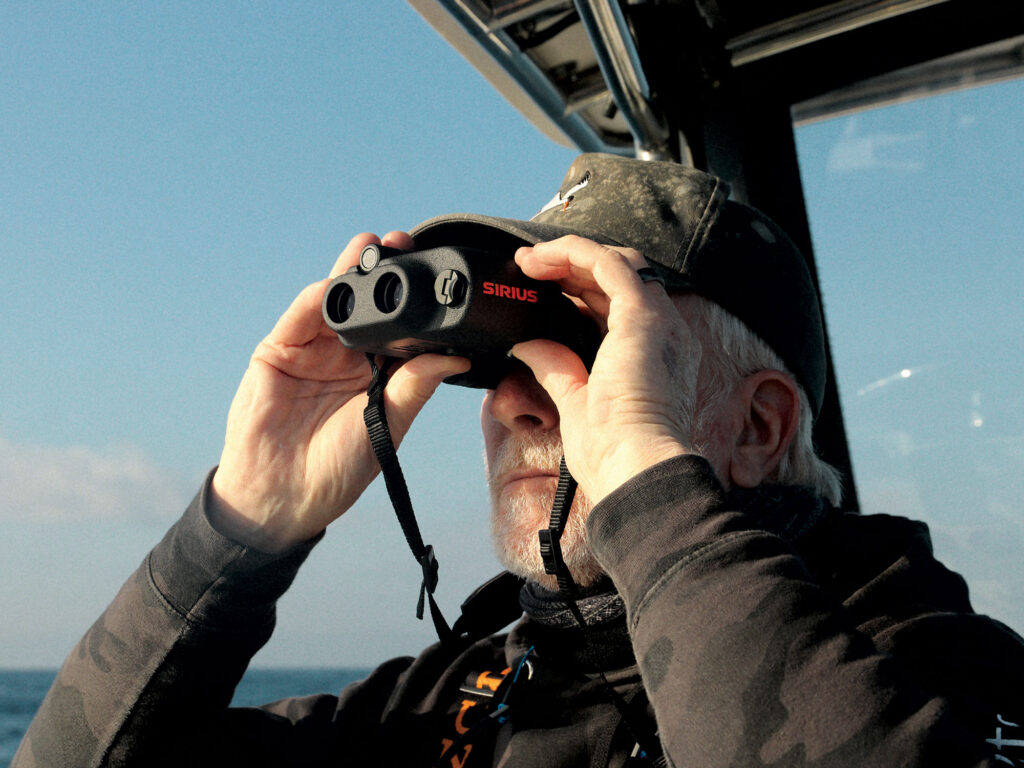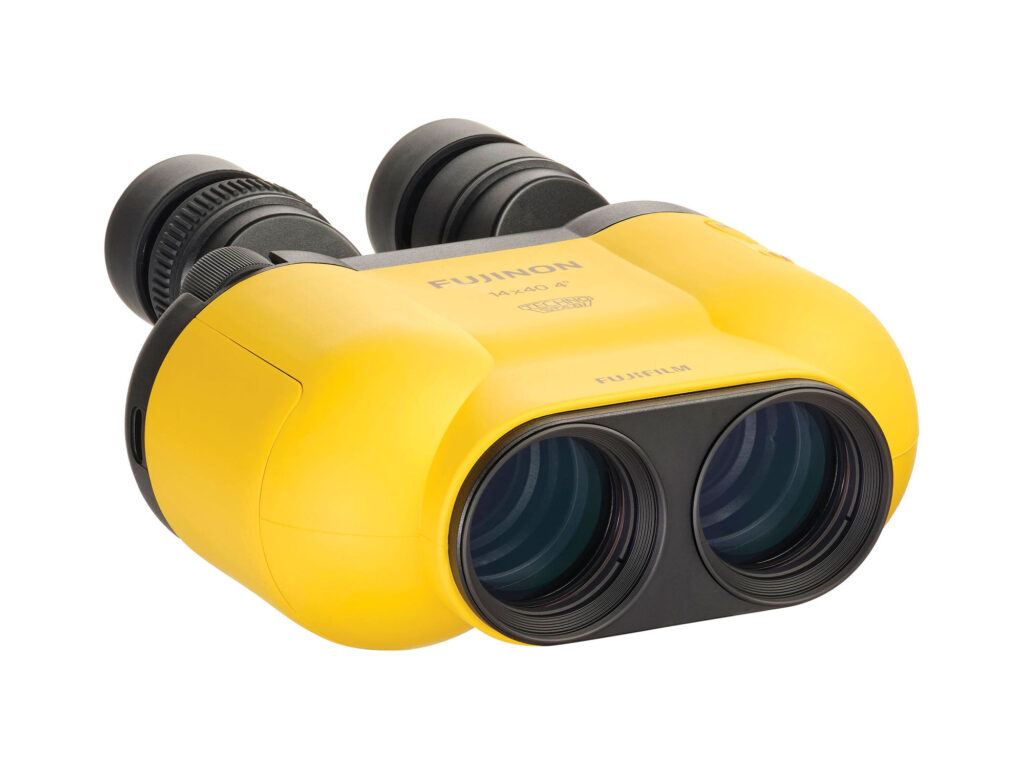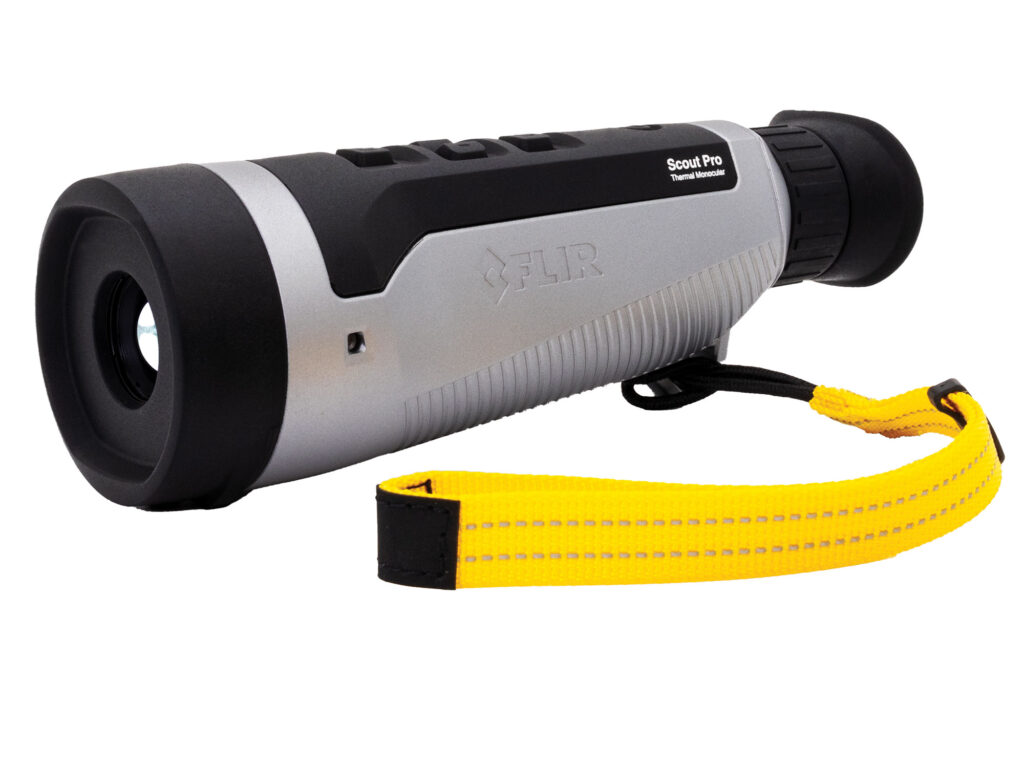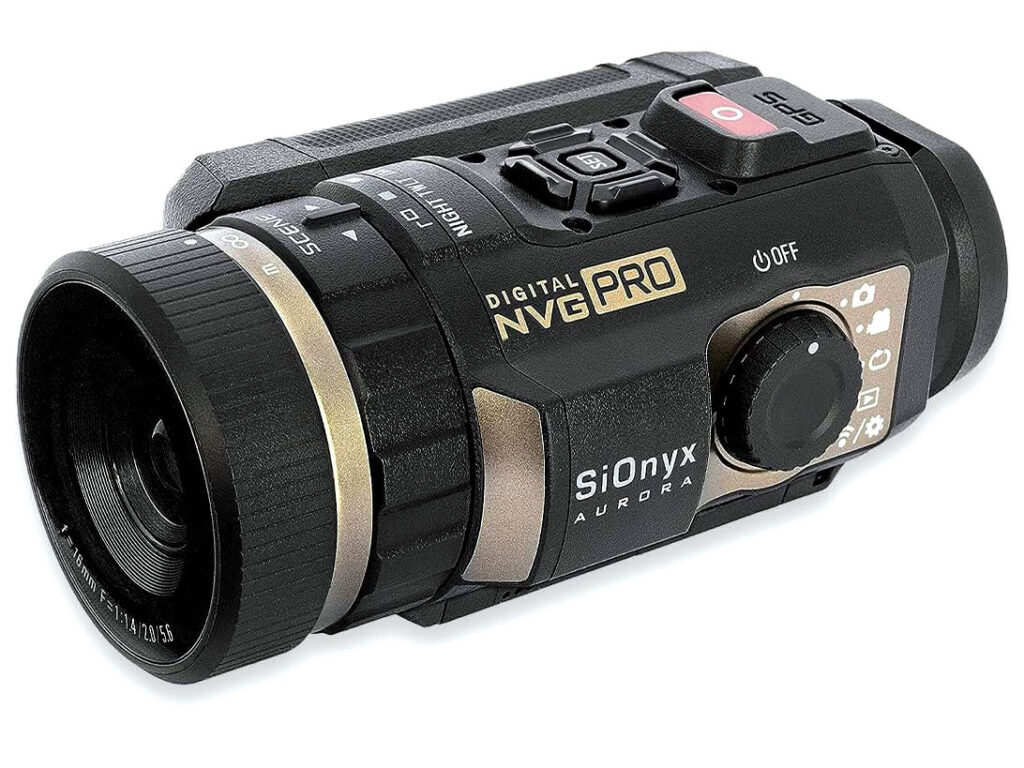SB Television
Stabilized Binoculars and Imaging Scopes Help Boating Anglers
 Koden’s Sirius 12 binoculars steady the magnified view when the deck is heaving and pitching.
Jim Hendricks
Koden’s Sirius 12 binoculars steady the magnified view when the deck is heaving and pitching.
Jim Hendricks
For nearly 400 years, mariners have relied on optics—mostly spyglasses back in the day—to see farther across the water. In more recent history, the magnifying and light-gathering properties of conventional binoculars have enabled boaters to identify hazards at a distance, navigate more safely, and spot signs of faraway fish.
Yet, there are downsides to trusty old marine binoculars. Rough seas make it difficult to steady a magnified image aboard a boat. The greater the elevation—such as in a tower—the more jittery the view becomes.
Also, conventional binoculars don’t work as well in the dark as they do during the day. They do collect more available light to see a bit better than the naked eye at night, but boaters still struggle to make out details.
Fortunately, today’s electro-optical technologies are overcoming these downsides. What’s more, handheld iterations of these technologies allow you to carry electro-optics from your boat to a buddy’s boat for a day of fishing, just as you might with your trusty old 7×50 conventional binoculars.
Perhaps best of all, retail prices for many of the new handheld electro-optical devices prove more affordable than ever, allowing a greater number of boating anglers easier access to these new technologies and enabling them to navigate more safely and find more fish. Let’s look at what’s available.
 Fujinon Techno-Stabi TS-X 1440 binoculars dampen vibration and movement.
Courtesy Fujinon
BUY NOW
Stabilized Binoculars
Fujinon Techno-Stabi TS-X 1440 binoculars dampen vibration and movement.
Courtesy Fujinon
BUY NOW
Stabilized Binoculars
First, I want to clarify the two major categories of stabilized binoculars. Electrically powered gyroscopic binoculars use a true mechanical gyrostabilizer that spools up, much like a spinning top, to create a steady field of vision on a rocking boat. While these handheld electro-optics work exceedingly well, the prices of binoculars in this category can induce sticker shock, running as high as $5,500 and surpassing the discretionary budgets of many boating anglers. I wrote about this category of stabilized binoculars in the May 2024 issue. If you want to read more, visit saltwatersportsman.com/gear/the-benefits-of-gyrostabilized-binoculars.
For this story, let’s focus on the more affordable category of stabilized binoculars. These use electronic stabilization rather than a mechanical system. Fujinon’s Techno-Stabi series of binoculars represents one of the most popular examples. Fujinon’s TS-X 1440 ($1,299.95) binocs feature an electronic gyro-sensor that detects and corrects for any movement, ensuring the integrated erecting prism within the gimbal structure remains as stable as possible. Fujinon claims the world’s highest vibration correction performance in electronically stabilized binocs. It corrects not only shake but also vibration caused by ocean waves.
This steady field of vision facilitates greater magnification than traditional binoculars. Most conventional marine binocs max out at seven times (7x) magnification because anything greater becomes too jittery to be useful in rough seas. But the stability of the Fujinon binoculars allow for doubling that number, boosting the magnification to 14x with a 70-degree field of vision. Powered by four AA batteries and boasting a nonslip finish, the TS-X 1440 model is waterproof and floats.
While Fujinon dominated this field for many years, Koden has entered the market with the new Sirius 12 featuring electronic stabilization, a smaller size and a more affordable price ($699). These compact yet ruggedly built binoculars are manufactured in Japan using quality optics and internal electronic components. With a 57.6-degree field of view, their 12x magnification is slightly less than the TS-X 1440, but still stronger than conventional 7×50 binocs.
Ideal for spotting boats, dangerous obstacles, breaking fish, diving birds, weed lines and more, the Sirius 12 features a built-in six-axis electronic gyro-sensor to isolate the binocs from the rocking motion of the boat. The IPX7-waterproof electro-optics feature an easy-to-grip textured surface and an oil-repellent coating to protect the eyepiece and objective lenses. One AA alkaline battery provides 12 hours of operation.
Read Next: Are Gyro-Stabilized Binoculars Worth the Money?
 FLIR Ocean Scout Pro uses thermal imaging to detect objects at night.
Courtesy FLIR
BUY NOW
Thermal-Imaging Scopes
FLIR Ocean Scout Pro uses thermal imaging to detect objects at night.
Courtesy FLIR
BUY NOW
Thermal-Imaging Scopes
Many offshore fishing trips start before daylight and end after sundown. Having the ability to eyeball the surrounding waters at night for possible hazards augments navigational electronics such as radar, the chart plotter and AIS.
Thermal-imaging technology, which displays heat signatures of objects, animals and people, lets you see after dark. FLIR is a leader in this field and offers a number of fixed-mount systems that network with multifunction displays. Many of these sophisticated systems can prove expensive and require special installations, but the compact new FLIR Ocean Scout Pro handheld thermal-imaging scope ($2,395) offers a more affordable and portable alternative.
The latest FLIR handheld device, the Ocean Scout Pro provides a 500-meter detection range and a 32-degree field of view to enhance nighttime boating safety. A one-finger button controls zoom, brightness, standby and more.
This scope is also a camera, giving you the option to shoot photos and record videos. It also integrates a wireless app to manage and transfer files. The scope boasts an IP67 rating, and the battery lasts for six hours on a single charge.
Viewing palettes include White Hot, which displays warmer objects in white. A Grayscale palette creates images with realistic details, which boaters prefer. The Black Hot palette displays warmer objects as black. Sepia applies a golden hue to reduce eye fatigue.
 SiOnyx Aurora Pro amplifies light to deliver full-color daytime-like imagery after dark.
Courtesy SiOnyx
BUY NOW
Night-Vision Scopes
SiOnyx Aurora Pro amplifies light to deliver full-color daytime-like imagery after dark.
Courtesy SiOnyx
BUY NOW
Night-Vision Scopes
Night-vision technology is unlike thermal imaging. Night vision gathers minute amounts of available illumination, such as starlight, then amplifies this faint light many times. The resulting imagery is astonishing. What you see is a nearly realistic daylight view of your surroundings.
SiOnyx has recently emerged as the leader in night-vision products for boaters, and its fixed-mount Nightwave D1 marine night-vision camera ($1,895) has become one of the most popular among boating anglers.
However, SiOnyx also offers a more affordable alternative: the handheld Aurora Pro ($849). This scope/camera takes light-amplification technology to a new level that includes displaying in high definition and full color. The 1x to 3x magnification lets you zoom in on targets to get a better view. It boasts an IP67 waterproof rating.
It uses a rechargeable battery, and can also record video and wirelessly stream the view to a smart device via the SiOnyx mobile app. The Aurora Pro also has GPS, a built-in compass and an integrated accelerometer.
Thanks to advanced hand-held electro-optics, today’s boaters can see better and farther than ever, be it day or night.
The post Stabilized Binoculars and Imaging Scopes Help Boating Anglers appeared first on Salt Water Sportsman.
- Home
- About Us
- Write For Us / Submit Content
- Advertising And Affiliates
- Feeds And Syndication
- Contact Us
- Login
- Privacy
All Rights Reserved. Copyright , Central Coast Communications, Inc.